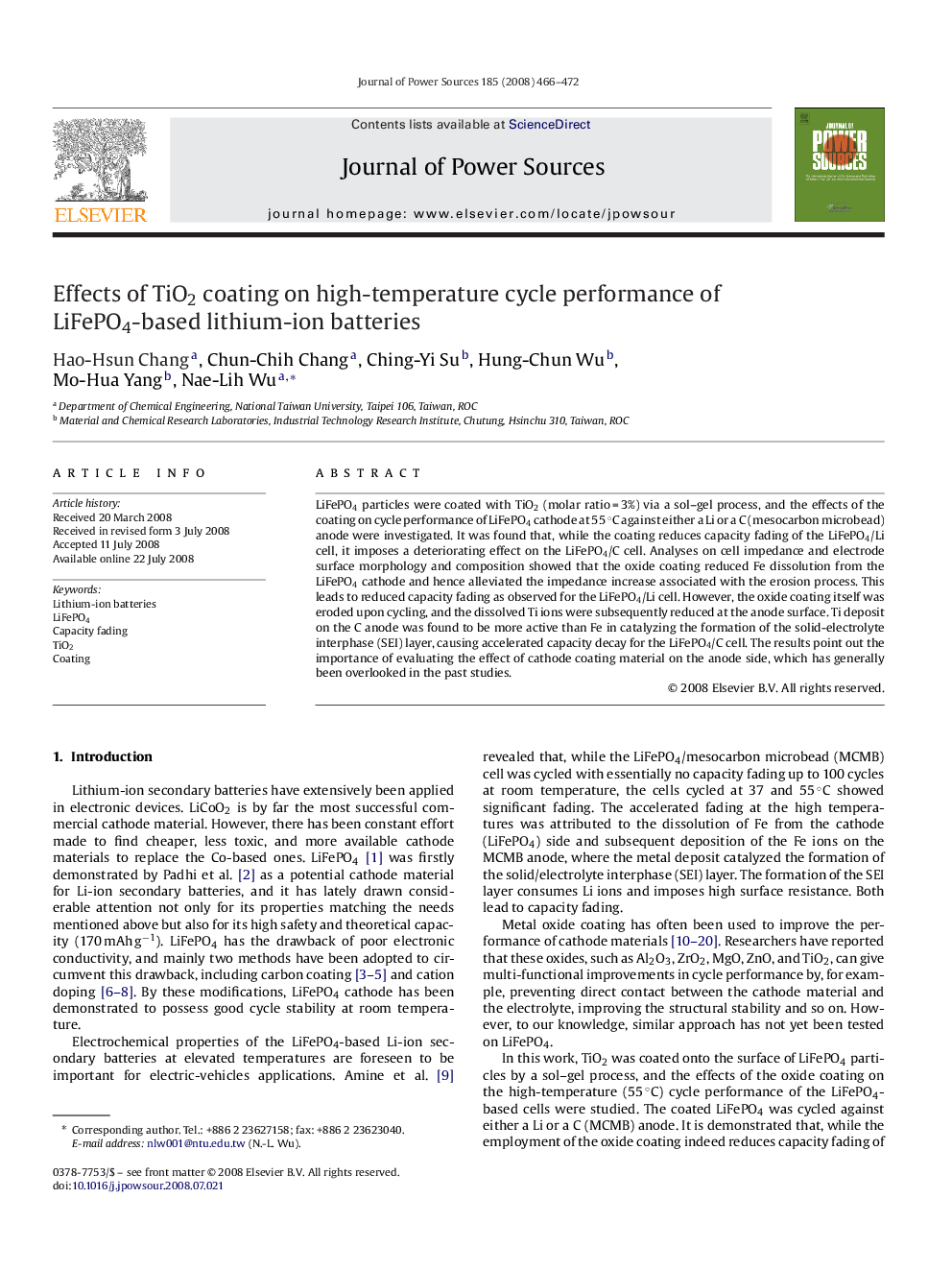| Article ID | Journal | Published Year | Pages | File Type |
|---|---|---|---|---|
| 1294436 | Journal of Power Sources | 2008 | 7 Pages |
LiFePO4 particles were coated with TiO2 (molar ratio = 3%) via a sol–gel process, and the effects of the coating on cycle performance of LiFePO4 cathode at 55 °C against either a Li or a C (mesocarbon microbead) anode were investigated. It was found that, while the coating reduces capacity fading of the LiFePO4/Li cell, it imposes a deteriorating effect on the LiFePO4/C cell. Analyses on cell impedance and electrode surface morphology and composition showed that the oxide coating reduced Fe dissolution from the LiFePO4 cathode and hence alleviated the impedance increase associated with the erosion process. This leads to reduced capacity fading as observed for the LiFePO4/Li cell. However, the oxide coating itself was eroded upon cycling, and the dissolved Ti ions were subsequently reduced at the anode surface. Ti deposit on the C anode was found to be more active than Fe in catalyzing the formation of the solid-electrolyte interphase (SEI) layer, causing accelerated capacity decay for the LiFePO4/C cell. The results point out the importance of evaluating the effect of cathode coating material on the anode side, which has generally been overlooked in the past studies.
